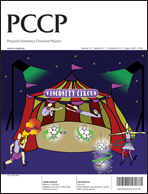In situ synthesized heteropoly acid/polyaniline/graphene nanocomposites to simultaneously boost both double layer- and pseudo-capacitance for supercapacitors
Abstract
It is challenging to simultaneously increase double layer- and pseudo-capacitance for supercapacitors. Phosphomolybdic acid/polyaniline/graphene nanocomposites (PMo12–PANI/GS) were prepared by using PMo12 as a bifunctional reagent for not only well dispersing graphene for high electrochemical double layer capacitance but also in situ chemically polymerizing aniline for high pseudocapacitance, resulting in a specific capacitance of 587 F g−1, which is ∼1.5 and 6 times higher than that of PANI/GS (392 F g−1) and GS (103 F g−1), respectively. The nanocomposites also exhibit good reversibility and stability. Other kinds of heteropolyacids such as molybdovanadophosphoric acids (PMo12−xVx, x = 1, 2 and 3) were also used to prepare PMo12−xVx–PANI/GS nanocomposites, also showing enhanced double layer- and pseudo-capacitance. This further proves the proposed concept to simultaneously boost both double layer- and pseudo-capacitance and demonstrates that it could be a universal approach to significantly improve the capacitance for supercapacitors.


 Please wait while we load your content...
Please wait while we load your content...